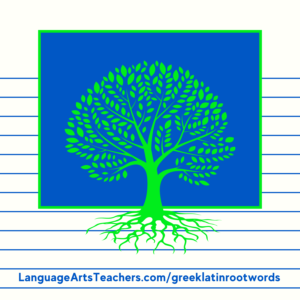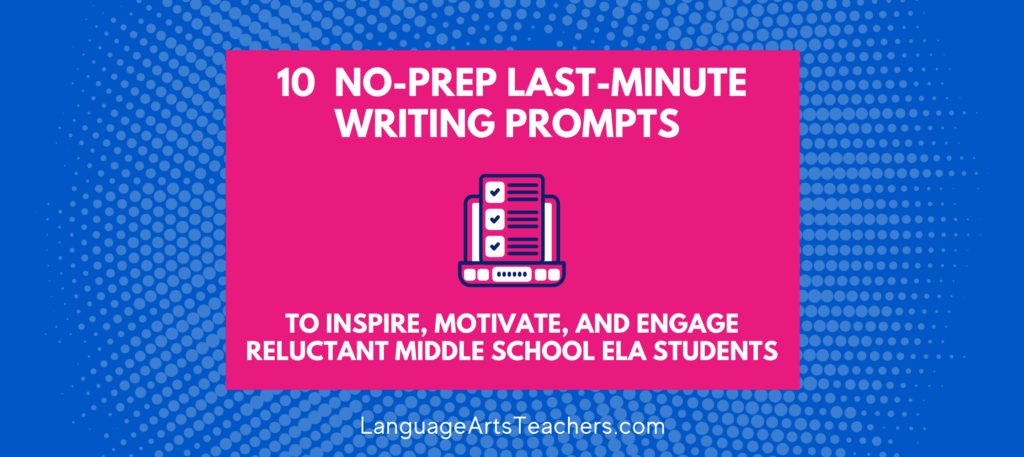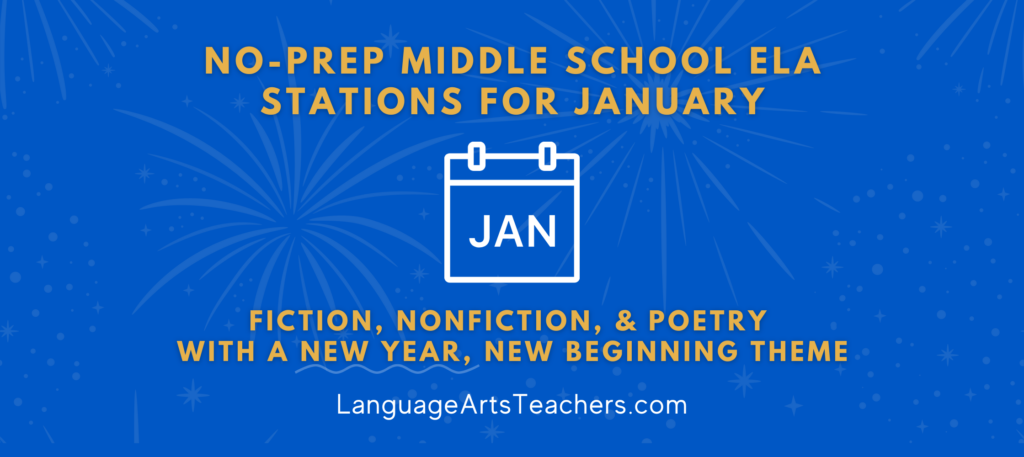About 80 percent of the entries in any English dictionary are borrowed, mainly from Latin. Over 60 percent of all English words have Greek or Latin roots. In the vocabulary of the sciences and technology, the figure rises to over 90 percent. – Dictionary.com
I didn’t quite realize the impact of Greek & Latin roots on the English language until I read that⤴️ here.
So. . . the quickest “cheat sheet” (and the most useful help) we can give our students to increase their general knowledge of vocabulary is by implementing Greek & Latin roots into our Middle School ELA vocabulary instruction.
✅Done.
Ok, but HOW is the question.

That’s why I’ve curated a collection of some quick, low-to-no-prep ways you can walk into your class tomorrow (assuming it’s a school day LOL) and begin Greek / Latin root word instruction:
- Build a “Morpheme Wall” > > In the spirit of ‘show don’t tell’, click here to check out simple images of what this is. You’ll see that it’s something you can do with your students on the board, on a Google slide, on a sheet of paper—so it’s totally versatile and easy to implement.
***BONUS*** The Morpheme Wall is a fantastic tool for struggling readers, intervention needs, or to push more advanced students further by challenging them to make broader connections. It’s literally built-in differentiation!
- Play Word Craft with your Greek / Latin Root words. Literally, the website for this game is www.playwordcraft.com and yes, it’s freeeeeee!
Here’s a quick run-down of how you can use it before you dive into the actual website:
Use it as more of an inquiry activity. It’s actually pretty cool to have kids learn some different roots and create their own words from those roots. Then, they’ll understand first-hand which roots mean what, especially because they included them in their own words.
Talk about student ownership of the vocabulary!
In fact, you’ll find that some of your students who are typically less engaged will advance to the top of the leaderboards. While there’s a gamification element to it (hence the leaderboards), there’s also some built-in individualized learning so students can all get what they need for vocabulary development.
- Thematic Category Challenge: If you have time (and I’ll get to the part about NO time here in a sec), do your own search of Greek & Latin root words and then categorize them into similar themes. Don’t do this for a whole school year’s worth of words (because that would be crazy). Just pick a concept like “bad” or “good” or “movement” and then pull together a handful of words that use the root word (there’s your vocabulary list for the week–done and done!)
Ok, but if you’re super short on time. . .
Like you’re reading this at 2AM and your eyes are closing and you don’t even know why you’re awake–
Then challenge your students to look up and research Greek & Latin root words themselves so they can categorize them. That means they are the ones doing the work, doing the thinking, and synthesizing what they’re discovering in order to create something new.
Plus, the cool part is that you can have students work independently on this, or in groups, and either way they’ll build more personal ownership into the whole vocabulary learning process (with zero extra work or prep on your part).
Oh, and one more thing: You can totally differentiate this discovery learning strategy for struggling students (by providing a particular root word for them so they can focus on one thing at a time). Since differentiation is not just for struggling learners, you can definitely challenge your high-flyers by leaving the challenge more open—See how many thematic categories you can create based on the types of Greek & Latin roots you find.
- A More Traditional, Daily Structure: If you need something more structured, like “I want something to do each day for 5-10 minutes of class or for quick station work” then here’s a suggestion for how to organize your time WITH accompanying activities (but it does assume some prep on your part–I wanted to give the options, though):
Monday: Students view 3 – 4 images that relate to the root word (discuss the images, the root word meaning, and the connections that need to be made)
Tuesday: Students work with the root word in a graphic organizer like a Semantic Map or Frayer Model so they can interact deeper with the vocabulary
Wednesday: Continue working on the graphic organizer from the day before, focusing more on sharing discoveries and looking for teachable moments
Thursday: This is prep for the teacher, but you might find it really valuable to include some practice questions based on short passages or sentences using the words in context.
Friday: Students go back to a previously-written assignment (could be a formal writing assignment or something like a journal response or paragraph / short answer) and look for a logical place to embed the word(s) for authentic use.
Need more help and support not just for vocabulary but for all your ELA reading & writing needs?
I have a basic (not fancy, but very easy to use) Greek / Latin root word collection inside the Middle School ELA Lesson Plan Membership area. It’s in the “Bonus Resource Library” section which you get full, instant access to when you join the Middle School ELA Teachers Lesson Plan Membership.




